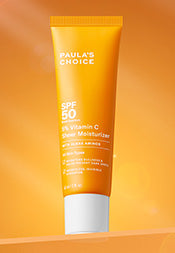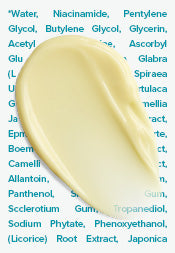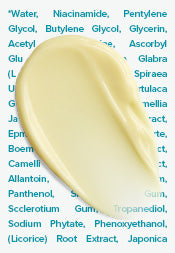Benefits of Vitamin E for Skin
Vitamin E has been around in skincare for a long time, which is why it’s so easily overshadowed by the newer and fancier-sounding ingredients. As it turns out, this workhorse ingredient shouldn’t be overlooked as it’s doing more to help protect your skin than you might realise.
Let’s explore why you should incorporate vitamin E into your daily skincare routine, shall we?
Why is Vitamin E Good for Skin?
Vitamin E is a naturally occurring component of healthy skin. It offers significant antioxidant properties to help defend your skin from pollution and other environmental stressors that would otherwise weaken it, causing unwanted changes.
Certain forms of vitamin E also help soothe skin. Unfortunately, with time and sun damage, the skin’s vitamin E decreases, depleting our natural ability to fight the signs of ageing.
However, this isn’t a doom and gloom story. You can absolutely replenish skin with topically applied vitamin E, and it doesn’t have to be from “special” vitamin E capsules. Chances are, some of your skincare products already contain vitamin E, whether you get it from a vitamin C and E serum or other skincare products.
Different Types of Vitamin E in Skincare
There are eight basic forms of the vitamin E molecule, and they can be either synthetically or naturally derived. The most typical forms are d-alpha-tocopherol, d-alpha-tocopherol acetate, dl-alpha tocopherol, and dl-alpha tocopherol acetate.
The “d” prefix indicates that the product was derived from natural sources, such as vegetable oils or wheat germ; whereas the “dl” prefix indicates that the vitamin was created from a synthetic base.
Research has shown that natural forms of vitamin E are more effective than their synthetic counterparts, but both definitely have antioxidant activity. You’ll most commonly find vitamin E listed as tocopherol or tocopheryl acetate on the ingredient list, which doesn’t indicate whether it’s naturally or synthetically derived, but you can contact the company to find out if you’re really curious.
Vitamin E and Vitamin C Combined
Without a doubt, using vitamin E and vitamin C together is great for the skin. When combined, they can improve the appearance of uneven skin tone, brighten a dull complexion, and strengthen the skin’s defences against the impact of environmental assault. These antioxidants play well together because vitamin C works optimally on the surface level, whereas vitamin E is oil-soluble, so it goes deeper — meaning you get the best of both worlds.
What About Vitamin E on Scars?
You’ve likely heard anecdotal stories about putting pure vitamin E on scars, but there isn’t sufficient evidence to show that it helps in that regard. In fact, some research shows that pure vitamin E can actually make matters worse because it can trigger a sensitised reaction.
Save vitamin E for its research-supported use in your normal daily skincare routine, rather than follow an old wives’ tale.
Learn more about skincare ingredients.
Shop Paula’s Choice fragrance-free, non irritating skincare best sellers.
References for this information:
Aesthetic Surgery Journal, September 2016, pages 959–965
Indian Dermatology Online Journal, July-August 2016, pages 311–316
Journal of Agricultural and Food Chemistry, June 2010, pages 7013–7020
Journal of Investigative Dermatology, November 2001, pages 1212–1217
Canadian Family Physician, July 2006, pages 855–856
Dermatologic Surgery, April 1999, pages 311–315











